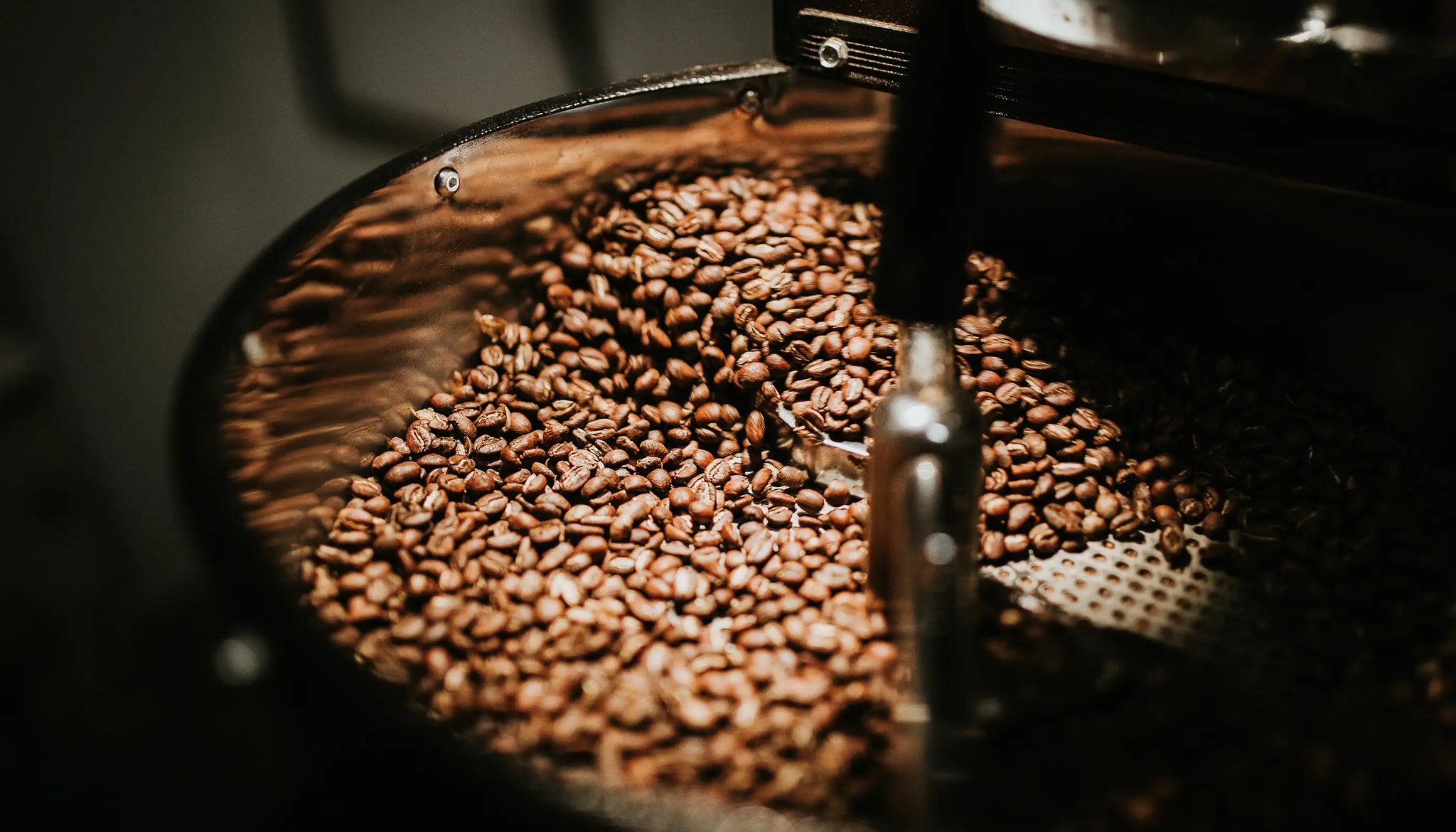What Makes SOE Single Origin Espresso Different from Blends
What Makes SOE Single Origin Espresso Different from Blends
Blog Article
Coffee Beans 101: Every Little Thing You Required to Find Out About Coffee and Blended Coffee Beans
When it comes to coffee, comprehending the subtleties of espresso and mixed beans can change your daily mug. From the growing procedure to toasting strategies, every step plays a function in your coffee experience.
Understanding Coffee Beans: Types and Selections
When diving right into the globe of coffee, comprehending the types and ranges of coffee beans is necessary for every enthusiast. You'll mainly encounter two major species: Arabica and Robusta. Arabica beans are recognized for their smooth, complicated tastes and lower high levels of caffeine content, making them a favored among coffee fanatics. On the other hand, Robusta beans pack a punch with a more powerful, a lot more bitter preference and greater high levels of caffeine degrees, often used in coffee blends.
Ethiopian Yirgacheffe offers intense flower notes, while Colombian beans give a healthy taste account. By familiarizing yourself with these beans and their tastes, you'll elevate your coffee experience and make even more educated selections in your brewing journey.
The Growing Process: From Seed to Bean
When you check out the journey of coffee, everything starts with seed selection methods that establish the foundation for top quality. From there, cultivation and collecting play necessary functions in ensuring the beans thrive. Handling approaches change those gathered cherries into the coffee beans you like.
Seed Choice Methods
Choosing the ideal seeds is vital for generating top quality coffee beans, as it lays the structure for the entire expanding process. Pay interest to the seed's age and storage problems, as fresh seeds often tend to sprout much better. Consider the disease resistance of various selections, as this can greatly affect your return.
Cultivation and Harvesting
As you nurture your coffee seeds right into flourishing plants, recognizing the growing and harvesting process is crucial for accomplishing the very best flavor and top quality. Begin by planting your seeds in well-draining dirt, preferably in a shaded area to protect them from straight sunshine. As your plants expand, keep constant moisture, and bear in mind their demand for nutrients. Trim routinely to advertise air movement and healthy and balanced growth.
Hand-picking is often the best approach to guarantee just the ripest cherries are picked. Timing is essential; gathering too early or also late can impact the flavor profile of your beans.

Processing Techniques Discussed
As soon as you have actually gathered your coffee cherries, the following necessary step is processing them to transform those dynamic fruits right into the beans you'll brew. In the dry procedure, you spread the cherries out in the sunlight to dry, permitting the fruit to ferment and impart distinct flavors to the beans. Recognizing these approaches is key to enjoying your coffee experience.
Roasting Strategies: How Flavor Is Developed
When it pertains to roasting coffee beans, recognizing roast levels is key to exposing their special tastes. Each toasting strategy effects the fragrance and enhances the flavor advancement process, providing you a richer coffee experience. Allow's explore how these aspects integrated to boost your daily mixture.
Roast Degrees Clarified
Roast degrees play an essential function in shaping the flavor profile of your coffee. You'll delight in intense acidity and fruity notes when you choose a light roast. As you relocate to a medium roast, you'll observe an equilibrium of sweet taste and intricacy, commonly highlighting delicious chocolate or sugar flavors. Dark roasts, on the various other hand, deliver strong, smoky attributes with less acidity, making them rich and robust. Each level arises from various roasting times and temperature levels, influencing the beans' chemical make-up. By recognizing these degrees, you can much better choose a coffee that matches your preference choices. Trying out various roasts to find which one resonates with you, boosting your total coffee experience and satisfaction.
Effect On Fragrance
The roast degree not only affects the preference of your coffee yet additionally considerably influences its scent. Each roasting method releases different unstable compounds, shaping just how your coffee scents. Furthermore, the quality of the beans plays an important duty; newly roasted coffee releases much more aromatic oils, enhancing that attracting aroma.
Flavor Growth Refine
As you check out the flavor advancement procedure, you'll find that roasting techniques play anchor an essential function fit the preference profile of your coffee. The toasting temperature level and time straight affect the acidity, sweetness, and resentment of the beans. Light roasts maintain even more of the bean's original tastes, highlighting floral and fruity notes. Tool roasts equilibrium level of acidity and body, offering an all-around taste. Dark roasts, on the various other hand, bring out bold, smoky qualities while decreasing the bean's integral high qualities. Throughout roasting, chain reactions, like the Maillard response and caramelization, change the beans and boost their complexity. Trying out different roasting degrees can assist you locate your best mixture, so don't be reluctant to taste and discover the abundant spectrum of flavors!
Espresso vs. Blended Coffee: Key Differences
Espresso and mixed coffee each offer special experiences that satisfy different preferences and choices. Espresso is a concentrated coffee made forcibly warm water via finely-ground coffee beans, leading to a rich, strong taste and a creamy layer of crema ahead. It's often appreciated as a shot or used as a base for drinks like coffees and cappucinos.
On the other hand, blended coffee combines various beans from different areas, producing a more balanced taste account. You'll usually discover blends that highlight level of acidity, sweetness, or body, making them flexible for different developing techniques. While espresso focuses on strength, combined coffee may offer a more comprehensive array of tastes that can transform with each sip.
Inevitably, your selection in between coffee and combined coffee come down to your individual preference. Whether you yearn for a fast shock or a leisurely cup, both options have something scrumptious to use.

Brewing Approaches: Unlocking the Perfect Mug
When it concerns developing coffee, finding the right technique can change your experience and raise your mug. Each brewing method has its unique beauty and can significantly influence your coffee's flavor and scent. For instance, using a French press enables you to enjoy a full-bodied and rich mixture, while a pour-over approach offers a tidy, intense mug with distinct flavors.
If you prefer espresso, purchasing a top quality device can aid you understand the art of pulling shots. Alternatively, for convenience, a single-serve husk system offers rate without giving up taste.
Don't forget about cold brew, which delivers a smooth, less acidic coffee suitable for hot days. Experiment with different methods to find what reverberates with your taste.
Tasting Notes: Determining Flavor Profiles
Exactly how can you truly value your coffee if you don't recognize what flavors to look for? Sampling notes are your guide to understanding the complicated Get More Information world of coffee. browse around here Some coffees may leave a chocolatey or caramel aftertaste, while others might have a bright, tidy finish.
Take into consideration the body of the coffee, too; is it airy and light or thick and syrupy? Do not forget acidity; an intense acidity can include sprightliness, while a low level of acidity might offer a smoother experience. By identifying these taste profiles, you'll deepen your link with each cup, making coffee sampling a fascinating journey of discovery.

Tips for Choose and Storing Coffee Beans
Selecting and saving coffee beans correctly can greatly boost your brewing experience. Beginning by picking top notch beans that suit your taste - SOE.
When you have your beans, save them in an impermeable container to stop direct exposure to air, dampness, and light. A dark, great place works best, so avoid maintaining them in the fridge or freezer, as this can introduce moisture. Only grind the quantity you need to maintain freshness; whole beans maintain taste longer than pre-ground coffee.
Finally, attempt to utilize your beans within two to 4 weeks after opening for peak preference. Complying with these ideas will ensure your coffee stays pleasurable and flavorful, boosting your day-to-day mixture to brand-new elevations.
Often Asked Concerns
How Long Do Coffee Beans Keep Fresh After Toasting?
Coffee beans remain fresh for concerning 2 weeks after toasting - SOE. You must save them in an impermeable container, far from light and dampness. After that, their flavor and aroma begin to decrease significantly

Can I Mix Different Coffee Bean Varieties?
Definitely, you can mix different coffee bean selections! Trying out blends can boost flavors and develop a special taste profile. Simply ensure to stabilize the strengths and attributes of each selection for the very best outcomes.
What Is the Ideal Grind Size for Espresso?
For coffee, you'll desire a fine work size, concerning the structure of table salt. This permits suitable extraction, causing a rich, tasty shot. Experiment a little bit to discover what suits your preference best!
Just How Does Altitude Affect Coffee Bean Taste?
Elevation affects coffee bean taste by affecting the growth rate and chemical make-up. Greater elevations cause slower growth, which enhances acidity and intricacy, offering your coffee a distinct and vivid preference you won't fail to remember.
Exist Decaffeinated Versions of Coffee Beans?
Yes, there are decaffeinated versions of espresso beans. You can appreciate a rich espresso taste without the high levels of caffeine kick. Just try to find "decaf" blends at your local cafe or specialized store.
Coffee Beans 101: Every Little Thing You Need to Know Regarding Coffee and Blended Coffee Beans.
When diving right into the world of coffee, recognizing the types and ranges of coffee beans is vital for every enthusiast.When it comes to roasting coffee beans, understanding roast degrees is vital to exposing their unique flavors. Coffee is a concentrated coffee made by forcing warm water through finely-ground coffee beans, resulting in an abundant, bold flavor and a luscious layer of crema on top.On the other hand, combined coffee combines various beans from various regions, creating a much more balanced taste account.
Report this page